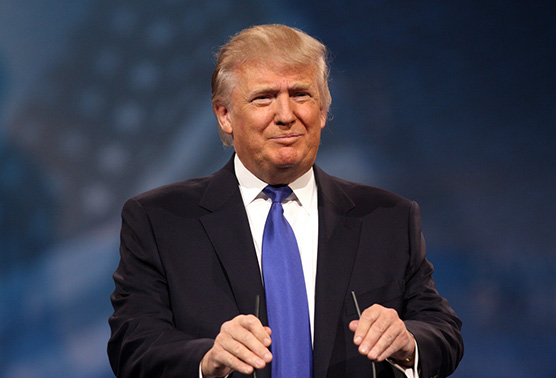Election 2016: Plane politics
Presidential candidates fly a lot
 Clinton, the most traveled secretary of state in United States history (and before that, the U.S. Senate’s most prolific flier), spent $2.1 million on campaign-related travel through August. Executive Flightways, the New York air charter firm contracted to fly Clinton and her staff (most recently in a Boeing 737), is the Clinton campaign’s third-largest vendor.
Clinton, the most traveled secretary of state in United States history (and before that, the U.S. Senate’s most prolific flier), spent $2.1 million on campaign-related travel through August. Executive Flightways, the New York air charter firm contracted to fly Clinton and her staff (most recently in a Boeing 737), is the Clinton campaign’s third-largest vendor.
Trump, who once owned an airline (the former Eastern Airlines Shuttle, which became the Trump Shuttle), has made extensive use of his current air assets throughout the primary and general election seasons. A black Boeing 757 known as “Trump Force One” frequently appears as a backdrop at airport rallies, and a Cessna Citation X and two Sikorsky S–76 helicopters have been pressed into campaign service too.
Trump’s campaign spent $2.7 million on air travel through July, and those funds mostly went to Tag Air Inc., a Trump-owned firm that operates the aircraft. Tag Air is the Trump campaign’s second-largest vendor.
The Clinton and Trump campaigns have been paying between $5,000 and $14,000 per flight hour depending on the type of aircraft they’re using.Presidential candidates have used dedicated campaign aircraft since 1959, when John F. Kennedy flew in a Convair 240 his father, Joseph Kennedy, bought for that purpose. For a century before that, trains on “whistle-stop tours” were the presidential campaign platform of choice. Today, things are a bit more complicated. The Federal Election Commission and Internal Revenue Service enforce an elaborate series of rules on who pays for campaign flights, and they vary for presidential, vice presidential, state, and local office seekers.
Presidential candidates must pay the full charter rate for the aircraft they use, even when flying under FAR Part 91. They can’t split expenses, or pay the equivalent first-class airfare as they did before the 2010 Honest Leadership and Open Government Act, which formalized campaign disclosure requirements and created a multi-tier payment system.
Presidential campaigns operate under one set of requirements, and the rules change with the office being sought and even the states in which the flights take place.
 Neither Clinton nor Trump have been allowing members of the news media to travel on their campaign aircraft, a departure from previous presidential elections. Members of the media must pay the equivalent airfare when traveling to destinations where commercial airline service exists, or their share of the air charter costs at places the airlines don’t fly.
Neither Clinton nor Trump have been allowing members of the news media to travel on their campaign aircraft, a departure from previous presidential elections. Members of the media must pay the equivalent airfare when traveling to destinations where commercial airline service exists, or their share of the air charter costs at places the airlines don’t fly.
The Clinton and Trump campaigns have been paying between $5,000 and $14,000 per flight hour depending on the type of aircraft they’re using. (Neither Clinton nor Trump is an FAA-certificated pilot. Libertarian Party candidate Gary Johnson holds a private pilot certificate with single engine land and balloon ratings.) But the winner will gain access to the ultimate in personal air travel: U.S. Air Force-operated Boeing 747s known as Air Force One when the president is on board.
Cost estimates for operating the highly customized aircraft vary widely depending on whether maintenance, security, and other items are factored in. But the government places the price tag at $206,337 per flight hour. By that measure, a Boeing 757, 737, or any other corporate jet is pocket change.
Email [email protected]



